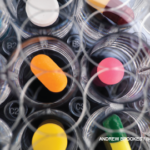 ACR Convergence 2020—Although the Assessment of SpondyloArthritis International Society has developed criteria for positive magnetic resonance imaging (MRI) in the classification of axial spondyloarthritis (axSpA), the criteria have high sensitivity with relatively low specificity, and experts convened at ACR Convergence 2020 to discuss the controversies surrounding the diagnostic evaluation of axSpA.1
ACR Convergence 2020—Although the Assessment of SpondyloArthritis International Society has developed criteria for positive magnetic resonance imaging (MRI) in the classification of axial spondyloarthritis (axSpA), the criteria have high sensitivity with relatively low specificity, and experts convened at ACR Convergence 2020 to discuss the controversies surrounding the diagnostic evaluation of axSpA.1
Xenofon Baraliakos, MD, PhD, an associate professor of internal medicine and rheumatology at Ruhr University, Bochum, Germany, gave the first presentation on advanced imaging in the evaluation of chronic back pain in the context of SpA. MRI can be used to detect a fat signal on the spine of patients with ankylosing spondylitis, but interpreting the images is complicated by the fact these lesions are present even in the general public, he said. In fact, inflammatory and fatty spinal/inflammatory sacroiliac joints, and spinal MRI lesions suggestive of axSpA, are found with relatively high frequency in the general public. Moreover, these MRI changes occur more frequently in older individuals, indicating mechanical factors may contribute to their development.
Dr. Baraliakos advised the audience to not deny an MRI to patients with unclear symptoms. “If symptoms are new, we have to clarify what is going on,” he said.
Although the severity of bone marrow edema is associated with the speed of radiographic progression of SpA, Dr. Baraliakos explained, whether the osteoblastic activity captured by positron emission tomography (PET) in ankylosing spondylitis is related only to inflammation remains unclear.
There does appear, however, to be a relationship between inflammation and fatty lesions on the occurrence of new syndesmophytes such that there is “no risk” of new syndesmophytes in patients lacking fatty lesions, he said, but a greater than threefold increased risk if fatty lesions are present. Dr. Baraliakos cautioned, however, against assuming that a positive MRI is proof of axSpA, especially in individuals who lack clear clinical symptoms indicative of disease.
Case Reports
Lianne Gensler, MD, a rheumatologist at University of California, San Francisco, then talked through two cases, the first of which was a 22-year-old man with right-side low back pain. His pain occurred suddenly after playing basketball. Although the pain initially worsened, it eventually improved over the course of weeks—only to return when the patient began to work out again. Not only did the patient not have classic inflammatory back pain, but a radiograph of his pelvis revealed only mild sclerosis, a nonspecific finding.
Dr. Gensler opted to perform an MRI of the patient’s sacrum and pelvis (with no gadolinium). Although the presence of bone marrow edema alone is not specific for axSpA, its location, intensity, number of affected slices and structural changes of fat and erosions affect the probability of an axSpA diagnosis.
Her team obtained two sequences: T1 and Short-TI Inversion Recovery (STIR). In her presentation, she showed the coronal oblique view, which revealed bone marrow edema as well as erosions consistent with active sacroiliitis. She concluded the patient had axSpA, and she noted that in his case, clinical features alone were not sufficient to diagnose him with axSpA.
For patients like this one, with a non-definitive radiograph and a suspicion of axSpA, she emphasized the importance of obtaining an MRI of the sacrum (not the lumbar spine).
Dr. Gensler next described a 29-year-old man who had experienced eight months of back pain. A radiograph of his pelvis was read as normal with no evidence of sclerosis or erosions. Moreover, an MRI of his sacrum showed no significant bone edema. Nevertheless, Dr. Gensler diagnosed the patient with axSpA based upon extensive structural changes of erosions and fat deposition visible on the T1 sequence that she described as having a high specificity and helping even in the absence of active sacroiliitis.
Imaging Challenges
Robert Lambert, MD, of the University of Alberta in Canada, elaborated on the imaging challenges but emphasized that because biological therapies are expensive, “[B]efore starting a biologic, every patient deserves to have one MRI scan.” He believes strongly in the importance of this baseline assessment.
Dr. Lambert presented the natural history of early disease as seen on MRI, focusing on a 22-year-old male with a family history of SpA. The young man was asymptomatic and had a normal X-ray. The team performed a research MRI scan of the sacroiliac joints and repeated it over time, and they found that not only did his disease not follow a consistent course, it evolved.
‘Before starting a biologic, every patient deserves to have one MRI scan.’ —Dr. Lambert
Not only does disease evolve, but imaging of the sacroiliac joints can be difficult to interpret because they have a high degree of anatomical variation, as well as multiple acute contour changes in the articular surface, Dr. Lambert said.2
Because MRI lesions occur commonly in normal controls, Dr. Lambert emphasized that clinicians must be skilled at recognizing structural lesions on T1-weighted MRI, and he suggested anyone seeking to better understand the use of MRI for spondyloarthritis should receive training directed at detection of lesions visible on T1-weighted MRI to improve use of MRI for the diagnosis of early SpA.
He concluded his talk by stating that physiological variation in controls is now well documented, and that experience is the key to deciphering the extensive range of anatomical and physiological variation on MRI of the sacroiliac joints. Although high-resolution 3D imaging of the erosions may offer more specific detection of inflammation due to SpA, it will also reveal more, small “erosion-like” lesions in normal subjects, therefore increasing the risk of overdiagnosis, Dr. Lambert said, which is a real concern.
Dr. Lambert noted that 90% of the time he is brought in to provide a second opinion, the patient has incorrectly diagnosed with a spondyloarthropathy.
Lara C. Pullen, PhD, is a medical writer based in the Chicago area.
References
- Baraliakos X, Richter A, Feldmann D, et al. Frequency of MRI changes suggestive of axial spondyloarthritis in the axial skeleton in a large population-based cohort of individuals aged <45 years. Ann Rheum Dis. 2020 Feb;79(2):186–192.
- Weber U, Lambert RGW, Pedersen SJ, etc. Assessment of structural lesions in sacroiliac joints enhances diagnostic utility of magnetic resonance imaging in early spondylarthritis. Arthritis Care Res (Hoboken). 2010 Dec;62(12):1763–1771.



